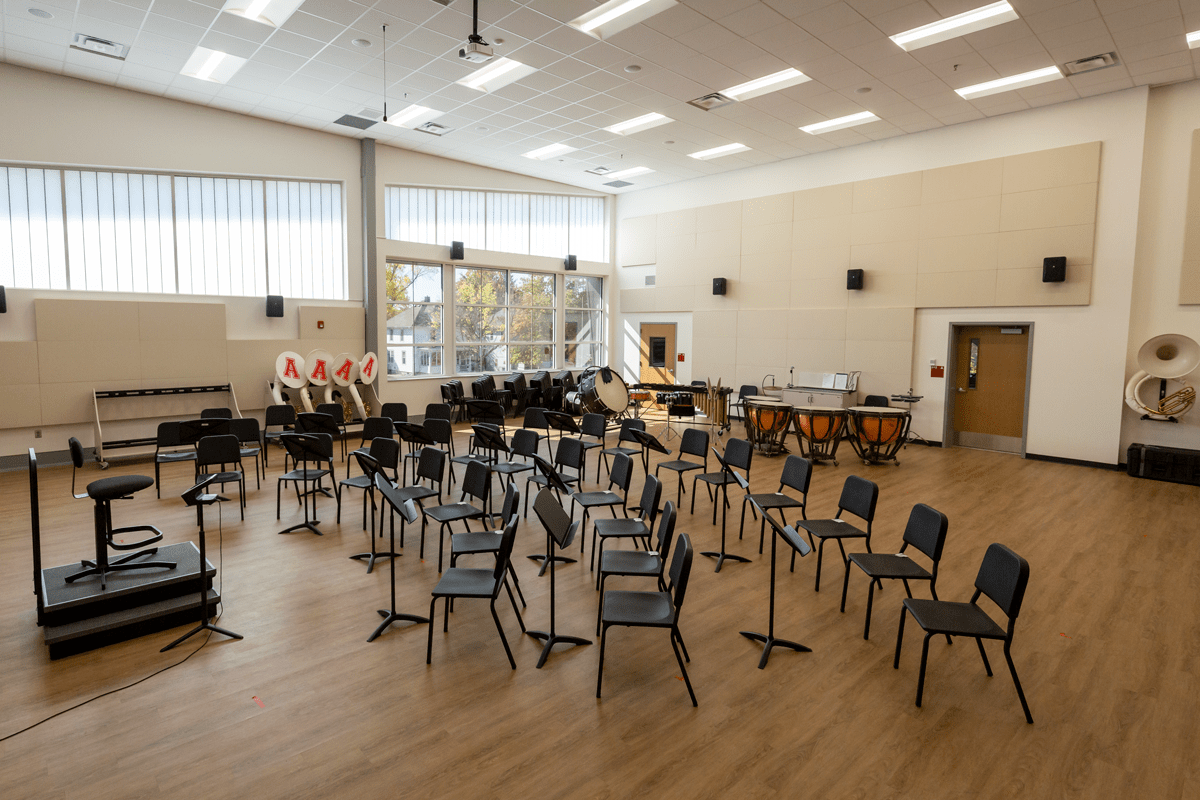
07 Mar Music Rooms: What to consider when building or updating yours
The Benefits of Music Education are Immense and Highly Beneficial to Students.
According to the National Association for Music Education, music education in schools offers a number of benefits, including the following:
- The development of reasoning and language
- Improved coordination
- Emotional development
- Enhanced auditory skills
- Improved creative thinking
- Opportunities to learn teamwork
- Increased engagement in school
Children’s linguistic abilities can grow and develop as a result of music education. Music stimulates the brain, and kids are exposed to a great quantity of language in a short amount of time due to the variety of sounds and lyrics. Music also exposes students to foreign languages, laying the groundwork for their capacity to understand and communicate in another language.
Music transcends the limits of language. Music has no language barrier. It is something that brings people together regardless of ethnicity or background. Music also transcends academic barriers. All learners can be successful through music.
Here are some tips on building or updating your Music Room:
Starting with a Plan
Many experienced teachers have established management plans that take into account the student’s movement, the organization of materials, and many other aspects of day-to-day teaching. The plan allows teachers to put themselves in the shoes of students, answering questions for them such as:
- Where do you want them to sit?
- How should they handle their belongings and classroom equipment, including instruments and cases?
- How is the space going to be used?
Considering these factors help with decisions about seating arrangements, storage areas, and it helps with organisation. There are many types of furniture and storage units that can be used to store music sheets, music stands, instruments and other related equipment.
On a deeper level, your classroom setup may depend on your philosophy of learning and the type of music class you have.
Flexible Learning Environment
Classrooms that are flexible allowing students to move through different stations or collaborate on projects and lessons. by providing different seating options for students and using moveable and adaptable furniture pieces.
One great way to create a flexible setup is to use flipforms. They are similar to risers but they look more fun and innovative. They’re ideal for tiered seating, can be turned into various shapes, are easily accessible with moving recessed wheels and they’re lightweight making them very simple for set-up.
Adding Inspiration
Once the furniture is in place, much of the focus turns to the walls, bulletin boards, and windows.
Studies have shown that adding these elements can enhance learning. A 2015 study of 153 classrooms in the United Kingdom found students learned better in classrooms that had better:
- Light, air quality, and temperature
- Opportunities for individualism that comes from flexible classrooms and student ownership
- A proper amount of stimulation with color, etc.
Improving Acoustics in a Classroom
In addition to visuals, music teachers have the added challenge of carefully considering sound. Therefore, during setup it’s helpful to listen in addition to looking. Consider also that thin, softer surfaces, including rugs, curtains, and cloth placed on bulletin boards or walls, will absorb higher-frequency sounds.
However, if it’s not possible to add acoustic panels, consider that parallel reflective surfaces may cause the most challenging sound issues in any classroom. One key goal is to avoid flutter echoes in smaller spaces.



No Comments